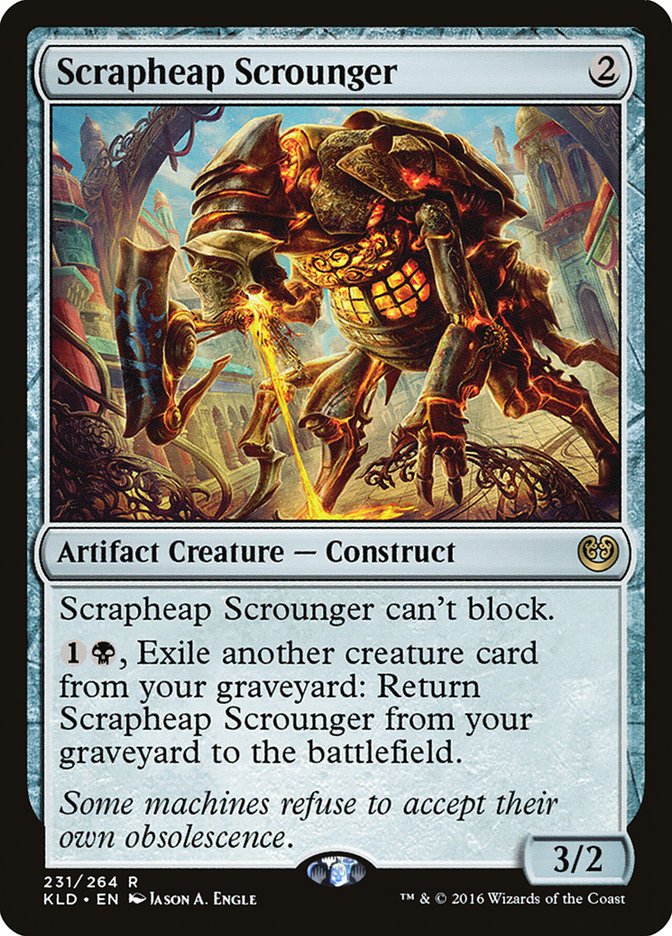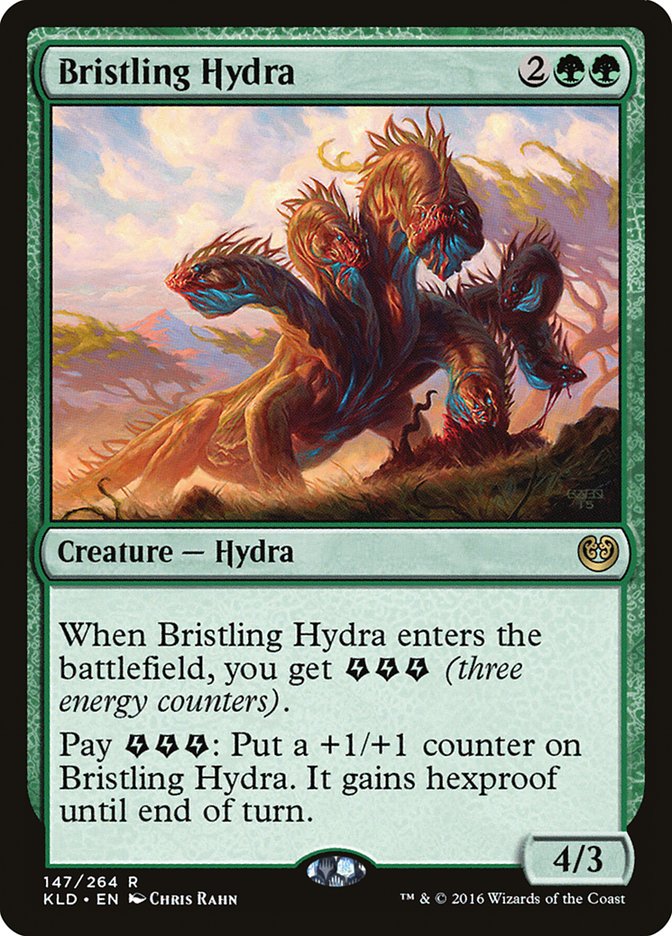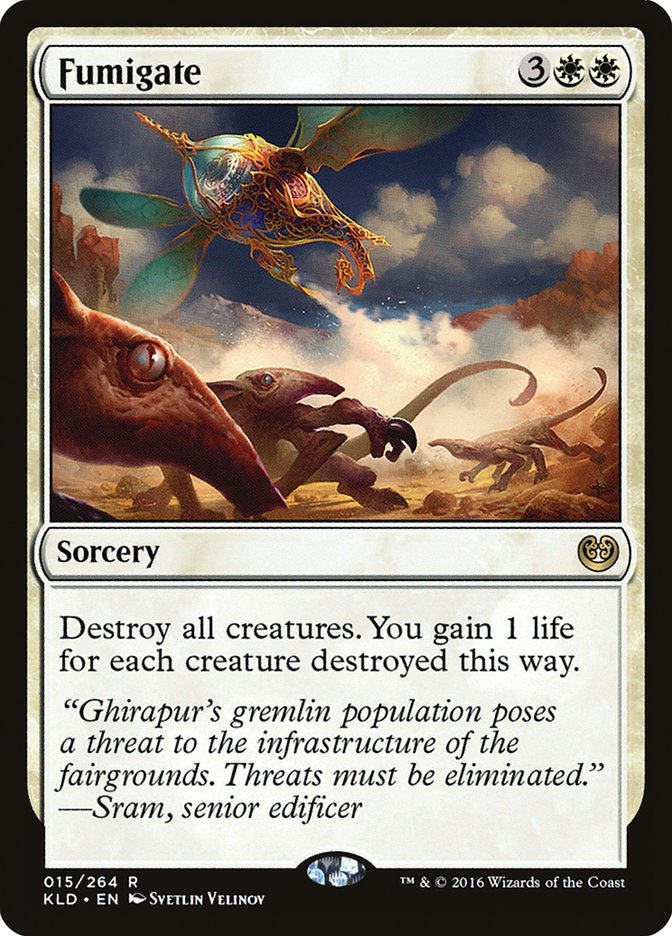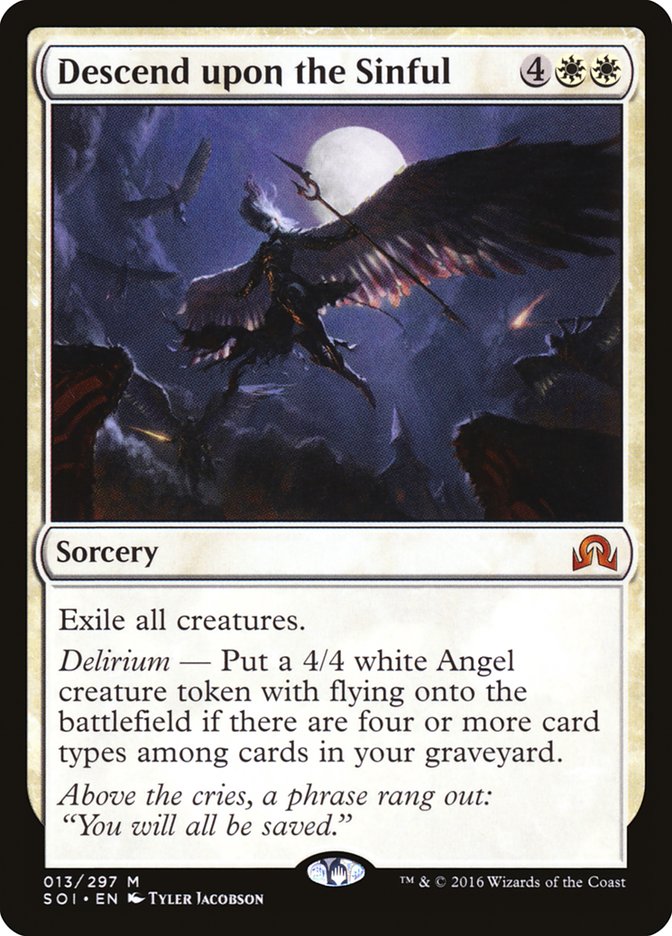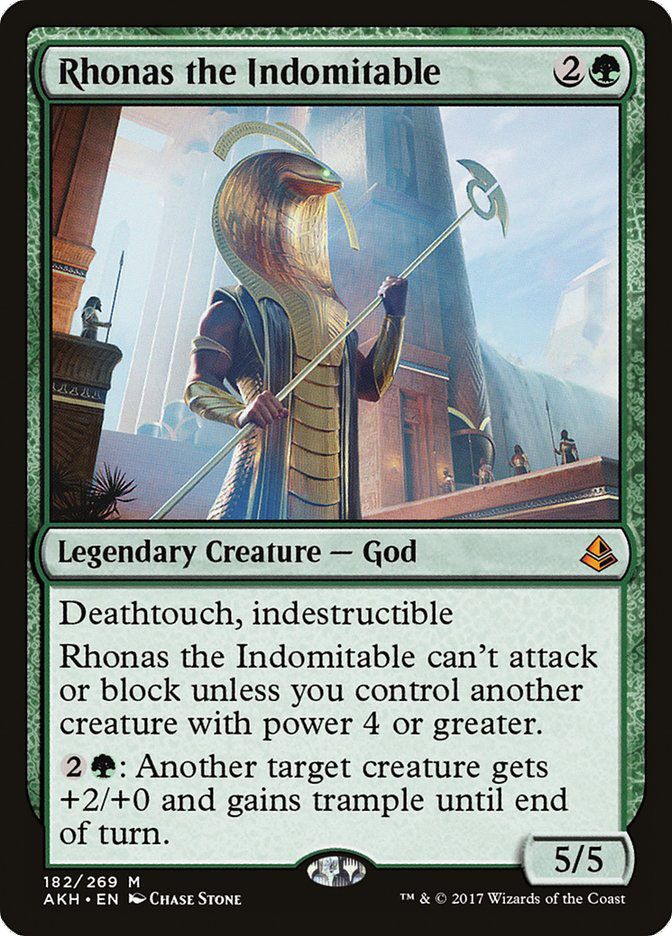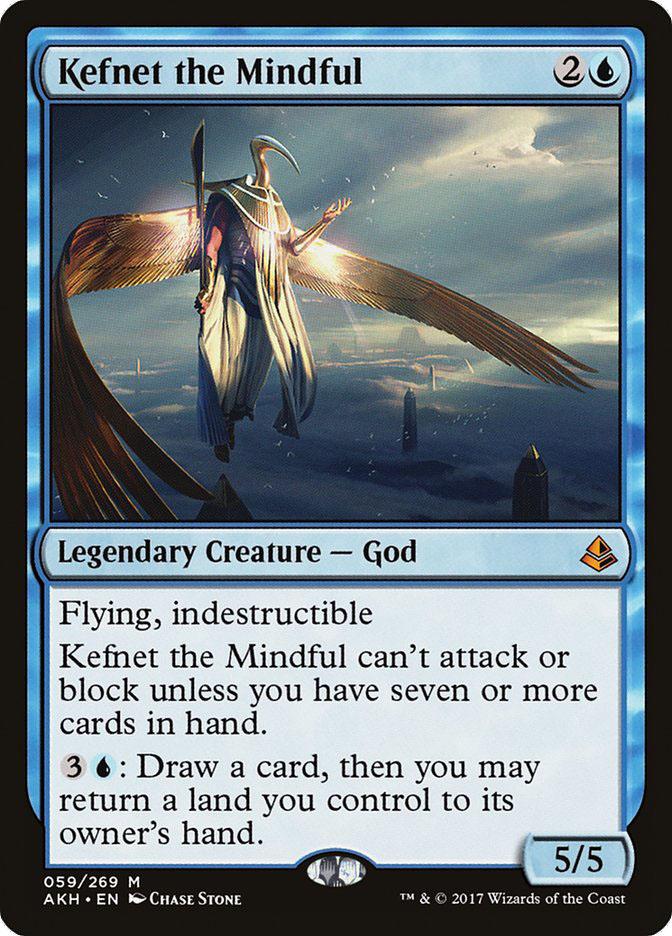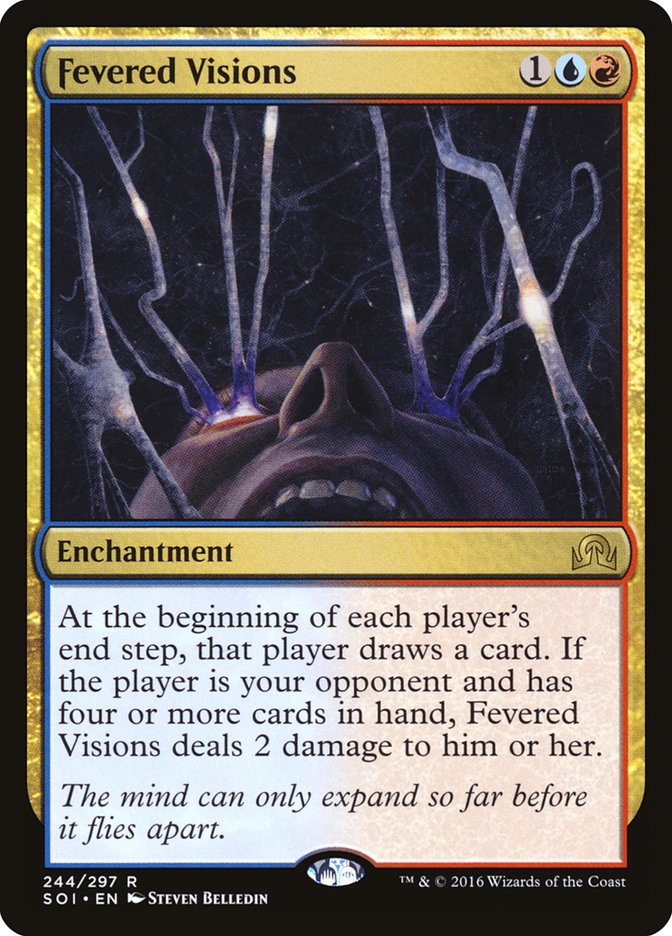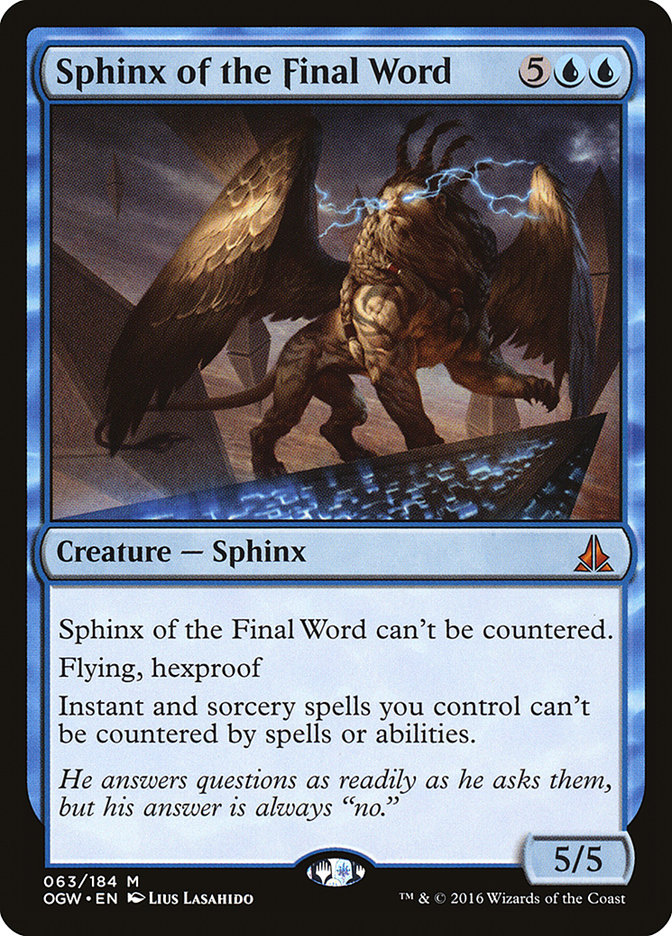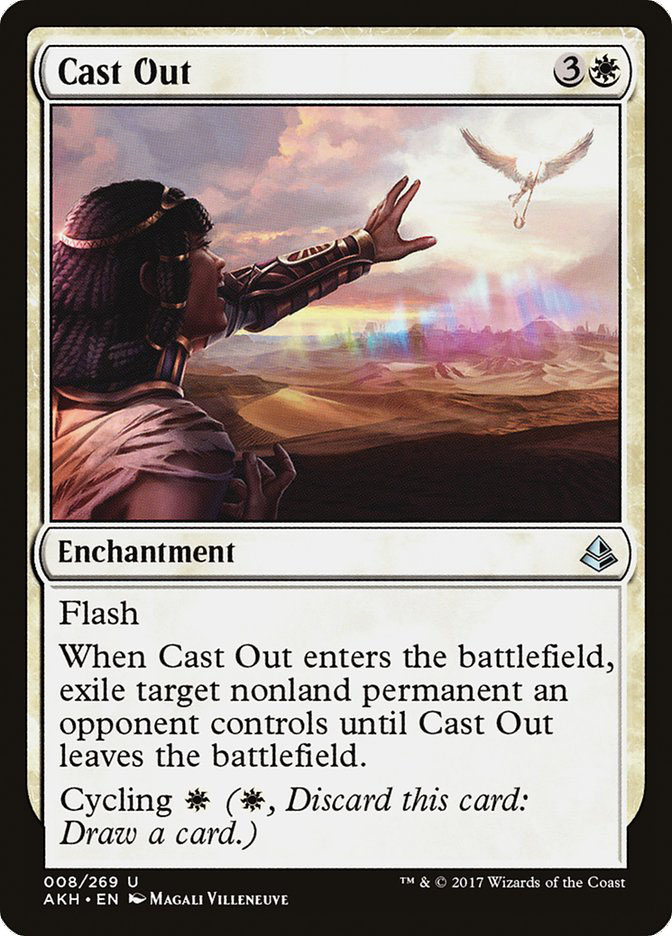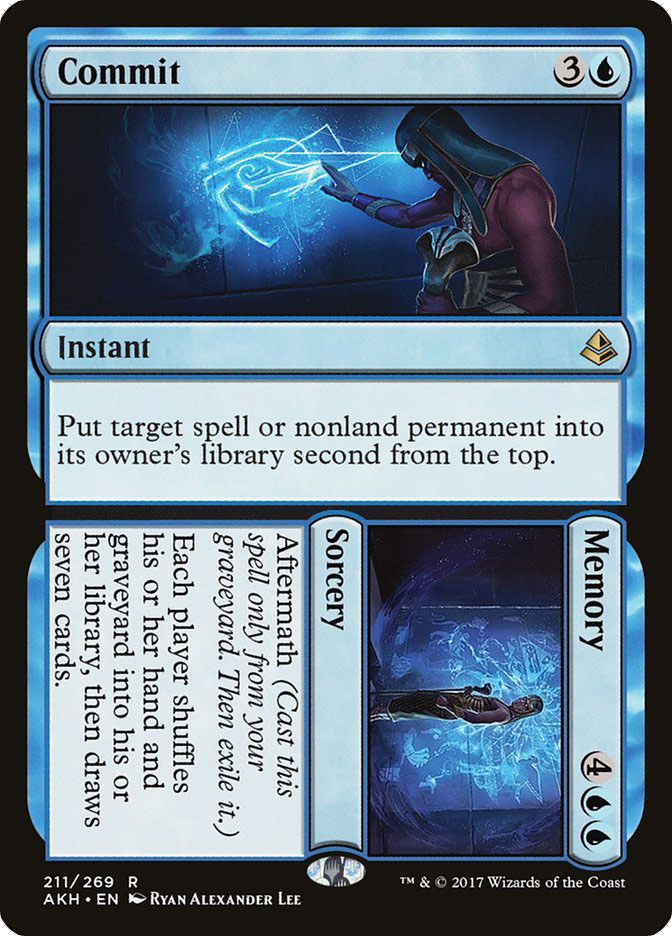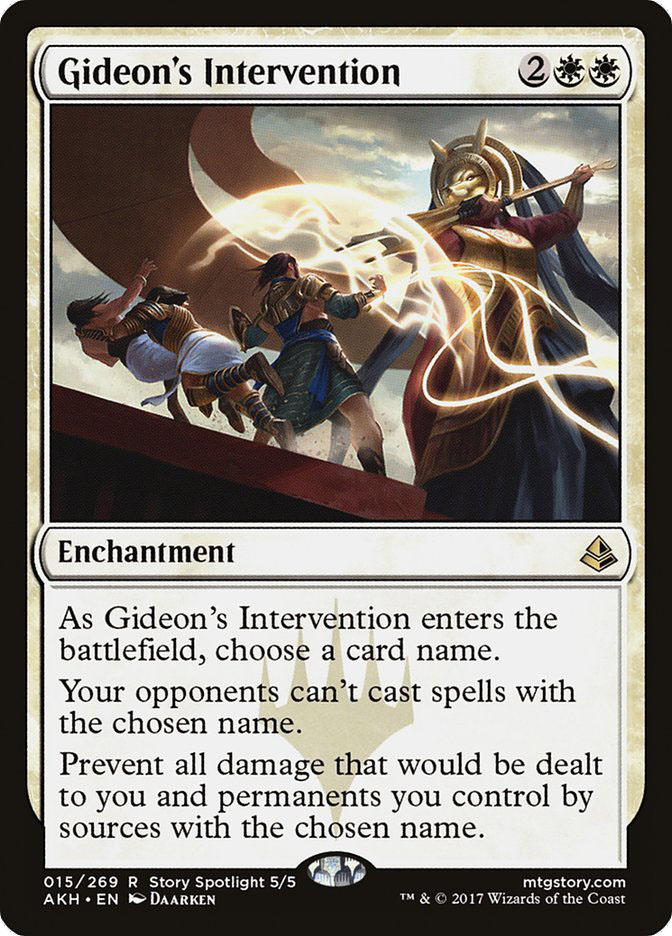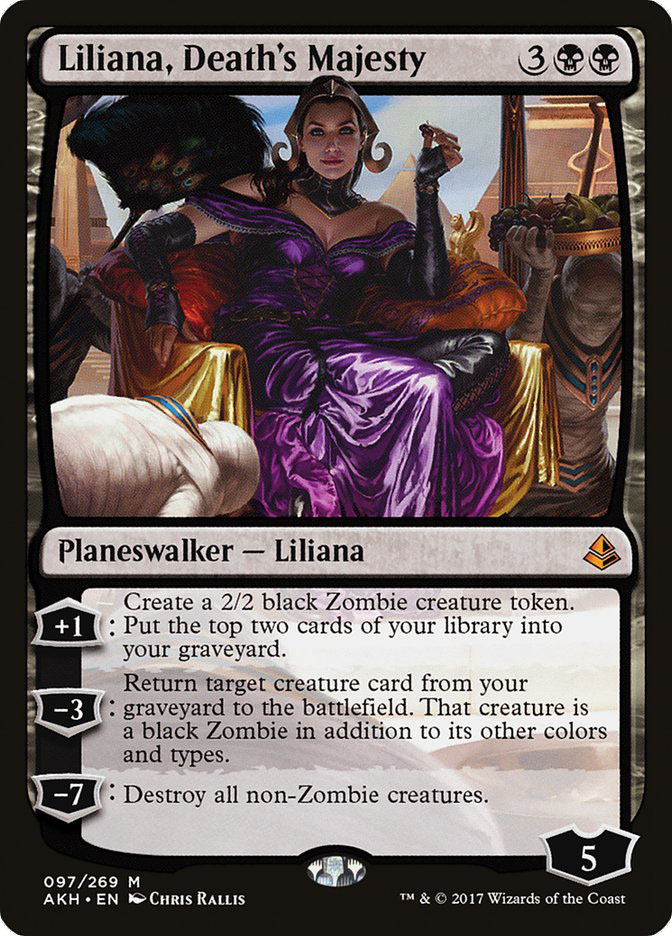I narrowed my decks for the Invitational late last week.
In Modern, I was certainly in complete agreement with Sam Black: it’s Lantern for me.
Lands (18)
Spells (42)

I know the deck. I’ve played a lot. And, as Sam says, despite Affinity being heavily on the radar, I was expecting most decks to fight the creatures of Affinity rather than have a pile of Ancient Grudge to mess up my world. Or at least I hoped.
The other choices that stood a chance were…
Creatures (5)
Planeswalkers (10)
Lands (24)
Spells (21)

Creatures (12)
Lands (20)
Spells (28)
Sideboard

I’ve always loved Burn, and Prison decks just suit me.
Standard is where the really interesting things are going on right now, though.
In Standard, these were the big three I was choosing from:
Creatures (15)
- 2 Tireless Tracker
- 2 Ishkanah, Grafwidow
- 4 Grim Flayer
- 2 Gonti, Lord of Luxury
- 1 Noxious Gearhulk
- 3 Walking Ballista
- 1 Manglehorn
Planeswalkers (4)
Lands (23)
Spells (18)

Creatures (5)
Lands (26)
Spells (29)

Creatures (4)
Planeswalkers (1)
Lands (22)
Spells (33)

Now, obviously all of these are for slightly different metagames. I basically agreed with Todd Stevens when he named these decks as the consensus top Standard decks:
B/G Energy
Mardu Vehicles
Zombies
Temur Energy
U/R Control
Given that two of the decks that I considered were pure control decks, the big question on my mind: what are the cards that would give me cause to worry? Given the real reality of U/R Control (and to a lesser extent a few other blue-based control decks), what are the cards that really give them fits, and how do you respond to them?
This is not just asking “what cards are good.” Versus a control deck, if you stick any reasonable threat on the battlefield against it, you’re likely to win. If you can keep out threats, that will be enough. Some cards, though, are hard to answer.
Enemy Number One: Gideon, Ally of Zendikar
This isn’t a new threat by any means, but there is basically nearly no card out there that you fear hitting the battlefield. The new Chandra, Chandra, Torch of Defiance is an awesome card, but if it sits out for a few turns, it will only have done a little bit of damage and, if answered, leaves nothing behind.
Gideon, Ally of Zendikar can be hitting for seven the turn after it comes out and will likely have a 2/2 sitting around after the fact.
There are some reasonable answers, though.
If you can either straight-up destroy the planeswalker or surprise it with a flier that gets through, Gideon, Ally of Zendikar can be managed. The body it leaves behind is still going to be a problem in most cases, which is why a card like Glorybringer can be a godsend. In some rare instances, other cards can solve the problem, but these usually require a lot of stretching and straining (Engulf the Shore, for example).
Enemy Number Two: Scrapheap Scrounger
Is it any wonder that both of the top two cards the enemies list are played in Mardu Vehicles? While Mardu Vehicles has been much less in the public eye as of late, Gideon, Ally of Zendikar and Scrapheap Scrounger made the deck so potent.
The reason that Scrapheap Scrounger is such a problem is that it is an incredibly efficient threat and an incredibly resilient one. If you aren’t in the game of exiling, this card is going to be a massive problem. The solutions to this problem are pretty few.
In theory, every single one of these cards is playable in a maindeck, though some are more awkward than others, and some simply don’t have a great home to be played – Nahiri, the Harbinger is a great example of such a card for a control deck in Standard.
If you notice, black is a classic control color that is sorely missing a credible answer. Yes, you can run a card like Scarab Feast, but this is not a great solution. Once Hour of Devastation hits, there are actually several real answers to Scrapheap Scrounger, but there weren’t any for the Invitational.
Enemy Number Three: Bristling Hydra
Wow, is this card a pain.
From when I’ve talked to control players, Bristling Hydra is the biggest reason they’ve thought to abandon a pure U/R Control plan.
It’s big enough to survive a Sweltering Suns, can’t be reasonably targeted by an answer, and is big enough to close the game quickly.
What the hell are you going to do to this critter?
Powerful enough sweeping cards are one reasonable solution. Here, you have to turn to white.
Again, Hour of Devastation will bring more in this department, but players didn’t have access to them at the Invitational. What else are the poor, hapless control players to do?
Negating a Bristling Hydra either requires a near-endless supply of blockers, a repeatable “tapping” mechanism, or just negating the card’s effect on a game. Most of these cards are a real stretch.
Each of these cards can try to essentially negate the Bristling Hydra, at least sometimes. Gideon’s Authority actually takes care of it entirely, but the card is quite narrow, though it is at least flexible. Each of the token generators is fairly fragile or unreliable in some way or another. Edifice of Authority can be a way to sap out the energy from a Hydra, but it can easily not solve the problem in time.
Deathtouch is another idea to solve the problem of the Bristling Hydra. There are a few candidates, though in a blue-based control deck, several of them will require a three-color deck to work.
Black is unsurprisingly the color with the most to work with here. Each of the black creatures here could easily be justified in a sideboard to deal with a Bristling Hydra, and while they can all be picked off by creature kill, usually there will be other cards to be looked at as competition for this, be they Torrential Gearhulk or Kalitas, Traitor of Ghet or some other card. Gonti, Lord of Luxury looks especially exciting, since it can not only answer a Bristling Hydra but can replace itself with something that will likely also impact the game, and it can be brought in against many opponents.
Enemy Number Four: The Zombie Tribe
Okay, individually all of these cards can be handled. Many of them just take the same work to fight, like Scrapheap Scrounger. However, collectively, the issues Zombies presents can be shockingly painful. The deck can easily build its own singular beast, go wide, not allow you to let one of its lords or demi-lords live, and bring things back from the grave. There is even actual card drawing from Cryptbreaker.
Fighting this basically doesn’t take any singular card. Much like fighting against Affinity in Modern, you can’t get by by simply having a single card that “will answer it.” You need a fully robust plan.
Usually this will include some kind of sweeping spell, be it Fumigate; Chandra, Flamecaller; Yahenni’s Expertise; or Sweltering Suns. On top of that, though, will be the need for fast removal like Fatal Push or Harnessed Lightning and exile effects like I mentioned above with Scrapheap Scrounger.
Zombies doesn’t let a control deck relax. Without a well-tuned, multi-faceted approach, a control deck will fall; with one, they still have a lot of work to do.
Enemy Number Five: Amonkhet Gods
I’ve only really seen these two Gods come to the party, but theoretically, if any of the other Gods were being played, they’d also matter. Of the remaining Gods, Hazoret the Fervent seems the most likely to find its way into play.
Indestructible is not a joke. Both Rhonas the Indomitable and Kefnet the Mindful can make it into the attack phase pretty easily in their respective decks. Rhonas the Indomitable especially presents a fast clock in this regards. Thankfully, there are effective solutions.
Each of these cards are the most efficient ways to deal with the problem. Actually just stealing the God is the outright most exciting way, but pretending that the God is just a super-powered Scrapheap Scrounger doesn’t work so badly either.
If you are lucky enough to steal a God, in my experience, the game has tended to end in your favor pretty quickly. Stealing anything is usually great, but when you’re stealing something so powerful, things tend to wrap up pretty quickly. While Rhonas can sometimes require a bit of effort for a control deck to make attack, a Torrential Gearhulk bringing it to life is pretty extraordinary.
Enemy Number Six: Anti-Blue Blue Cards
While not wildly common, these two cards can be a real nightmare, in large part because they are difficult to easily answer.
Howling Mine effects have generally been decent against control decks, if only because, bound by mana, a control deck can’t fully deploy all of their cards and maintain control. Add in the asymmetrical effect of Fevered Visions, and you’re talking about a real risk of just dying.
There really are shockingly few ways to get rid of a Fevered Visions when on the battlefield, and the only way to win once it’s there is to race it. Here is the comprehensive list of playable cards to deal with it:
Yes, you can play the various Naturalize style cards, but those cards really don’t feel like actually credible card choices in the current moment. Forsake the Worldly might be able to make the cut, but really, at that point, it just feels like you’d be better off with Cast Out.
Of course, you can fight your way through with Disallow. To those on this plan, I say, “Good luck!” You can do it, but it isn’t easy.
Sphinx of the Final Word is also, similarly, a nightmare. Thankfully, at such an expensive casting cost, there are ways to manage the card.
Your real options don’t involve countering it or targeting it, so you’re left with Wrath effects, discard, and non-counter “counters” like Commit and Summary Dismissal. If this hits play, you’re in for a world of hurt, so if your opponent has this, you either need to end the game before it hits or blow up the world. Killing an opponent quickly usually won’t be an option, but thankfully, even in blue alone, the fake counters of Commit and Summary Dismissal can at least keep things from slipping into a nightmarescape where your opponent’s spells can’t be stopped.
Enemy Number Seven: Liliana, Death’s Majestsy
While it can’t hit as hard as Gideon, Ally of Zendikar, Liliana, Death’s Majesty can quickly put on a clock. Worse, unless they’ve gotten greedy with it, a player using Liliana, Death’s Majesty isn’t vulnerable to a fast four damage to get rid of the frightening planeswalker.
This means that your answers have to be directly taking care of the card rather than relying on a surprise Glorybringer or Archangel Avacyn to clean up the mess. Sadly, here are the few card options
This is a pretty paltry list. Thankfully, at five mana, Liliana, Death’s Majesty could very easily be stopped by countermagic. Also, thankfully, Liliana, Death’s Majesty isn’t particularly popular, unlike Bristling Hydra and Gideon, Ally of Zendikar.
Game On!
Thank you to everyone who wished me luck! this past weekend. I’ll have more to say about my Top 8 run at the SCG Invitational later this week!



